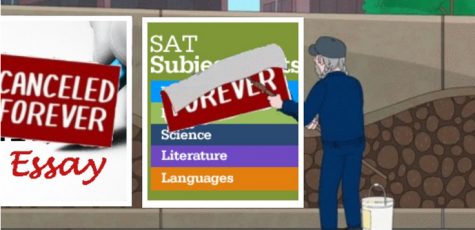AP Computer Science A
August 17, 2020
PREREQUISITES:
≥ B- in both semesters of Math III, Enhanced Math II, Pre-Calculus, or higher level math courses.
DESCRIPTION OF COURSE STUDY:
- This course is an introduction to the programming language Java. It primarily focuses on writing code, but abstract concepts regarding computer science are also important aspects of the course.
- Some key concepts covered throughout this course are Java syntax, algorithms, data structures, and Object-Oriented programming. There is also a major focus on logic and problem solving.
- Assessments usually involve a combination of writing code to answer a prompt, tracing (in other words, reading and interpreting) pre-written code, and answering questions about theory, logic, or how a computer works. At the end of each semester, there is a final project, which requires you to write an entire program on your own as a culmination of what you have learned.
HOW TO STUDY:
- The textbook will be one of your primary resources, and it often contains more in-depth information that was only briefly discussed in class.
- Go through your class notes, which will likely be the code you wrote in class plus some additional notes and clarifications.
- Mr. Kinney creates OneNote pages of class notes almost every day. This class notebook can be accessed on Canvas. Read through these notes to see anything you might have missed in your own notes.
- Mr. Kinney often opens a multiple choice practice from the College Board website before an assessment. They are much more simplistic than his tests, but if you want to review some basic concepts, they can be a beneficial study tool.
- In Repl (the online coding environment you will use), Mr. Kinney gives you access to a folder of assignments called “Extra Practice.” There are over a hundred little assignments to help students review basic concepts, and they can serve as a quick and easy tool to brush up before an assessment.
- Mr. Kinney will often give a tracing assignment or some form of review during a unit. Review these assignments before a quiz or test, as they offer a more accurate view of what he expects you to know.
- Review class assignments and projects. Try to redo assignments that you initially struggled with.
RESOURCES:
- As mentioned above, the textbook, Mr. Kinney’s OneNote pages, the College Board’s multiple choice practice, the short “Extra Practice” assignments in Repl, and old assignments and reviews are all incredibly helpful resources.
- Occasionally, Mr. Kinney will create Kahoot reviews, which are helpful for quickly refreshing your memory on some key concepts.
- Generally speaking, online resources are not as helpful for this course, as Mr. Kinney’s tests are very unique. As a result, the resources listed above will be far more helpful, relevant, and worthy of your study time. However, if you want to review some basics, you can easily find Quizlets, study guides, and other resources online.
- Remember, you can always utilize Office Hours if you need extra help.





